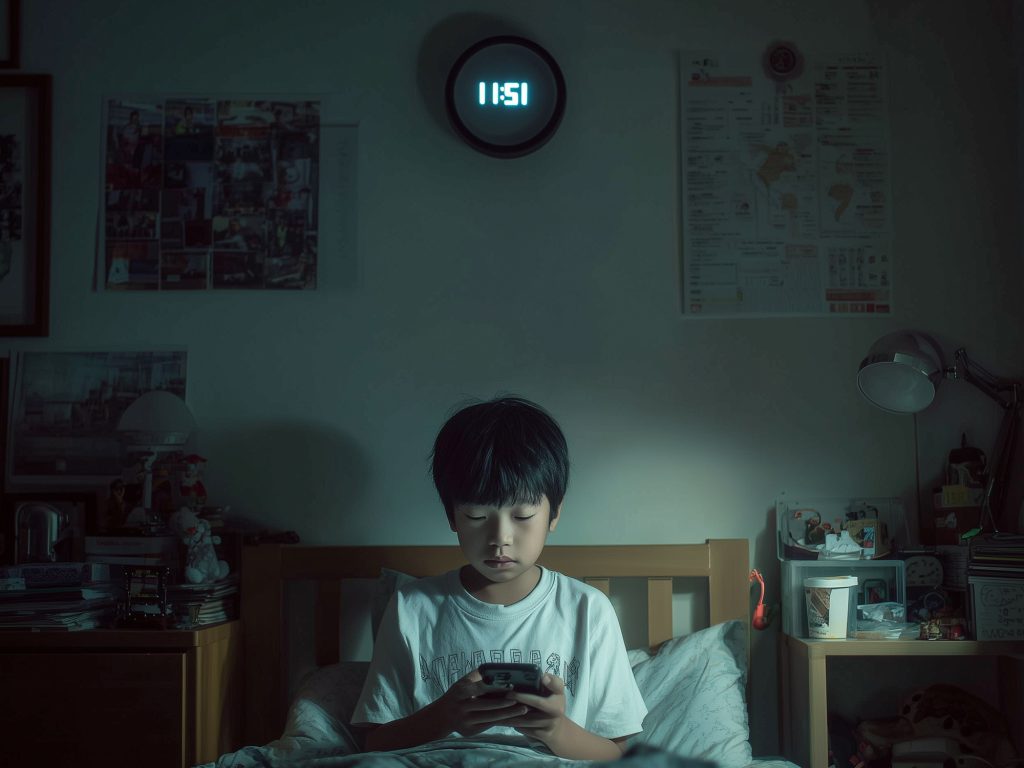Every evening, you call your child for dinner—only to find them glued to a tablet or phone. You’ll see the same thing at your favourite hawker centre or restaurant, where parents let kids watch videos so they can enjoy a quiet meal. If you’ve ever searched for “how to manage kids’ screen time” or “limit screen time for children”, you’re not alone. Many Singaporean parents wonder how much is too much and how to keep screen habits healthy without daily battles. Here’s a down-to-earth look at managing screen time after school.
When my niece moved here from overseas, her parents were amazed by how much time local kids spend on screens. Between WhatsApp chats, YouTube, and game apps, it seemed like devices ruled their afternoons. If your child comes home and immediately straightens their shoulders to stare at a screen, you’ve felt that pull too.
So, what do the experts say? The World Health Organisation recommends no more than two hours of recreational screen time per day for school-aged children. In Singapore, the Ministry of Health echoes similar advice—balancing digital learning with play, reading, and family time. But knowing the number is one thing; making it work in real life is another.
Start with a Daily Screen-Time Plan
Think of screen time like dessert: your child knows they get cake only after dinner. Create a simple after-school routine that slots in:
- A short snack and chat about their day
- Homework or small-group tuition (2–3 pm to 5 pm)
- Outdoor play or reading time
- A set “screen window” (for example, 6 pm–7 pm)
- Dinner and family catch-up
When you search “after school screen time tips Singapore,” you’ll find parents suggesting charts and timers. In our home, we use a kitchen timer—digital but very old-school in feel. When the buzzer rings, the device goes off.
Make Screen Time Count
Not all screen time is equal. Educational apps for Maths or English can count toward your limit. If your child logs onto an interactive PSLE-prep app, that’s different from TV-YouTube-TikTok binge-watching (exceptions made for TikTok videos by local tutors sharing subject tips). A quick Google search for “educational apps for kids” often shows up many free, MOE-aligned resources. Encourage those first, and treat entertainment as the special treat—like a weekend movie or half-an-hour of games.
Involve Your Child in the Rules
Nobody likes rules imposed without discussion. Sit down and ask:
- What apps do you enjoy?
- How many minutes per day feels fair?
- What could you trade screen time for?
When children help set the “screen time routine,” they respect it more. Parents often Google “kids screen time agreement template” and find printable contracts. You don’t need to be a lawyer—just write down the key points and stick it on the fridge.
Offer Screen-Free Alternatives
After a long day of classes, kids still need downtime that isn’t digital. Some families in Singapore set up:
- A mini reading nook with comics and storybooks
- A simple craft table for colouring, painting or Lego
- outdoor games sessions at the neighbourhood game courts
When your child sees these options as fun, the device loses its magnetism. It’s amazing how quickly they swap TikTok for paper and crayons, or interesting STEM projects—if you give them the chance.
Lead by Example
If you’re scrolling through Instagram on the couch, your child notices. Search results for “parents screen time tips” always stress modelling good habits. Try a “no-phone dinner rule” or designated “phone-free family time” every weekend. When your child sees you reading a book or joining them for a puzzle, they learn screens aren’t the only path to fun.
What to Do When Limits Get Broken
Even with the best plan, kids will push boundaries. When screen time goes over the limit:
- Stay calm and restate the rule: “We agreed on 30 minutes today.”
- Offer a quick trade-off: “Let’s find 10 minutes to read together.”
- Don’t make it into a long lecture—stick to the plan.
Quick resets work better than days of nagging.
Wrapping Up
Managing screen time isn’t about strict bans—it’s about balance and family habits. By setting clear limits, offering alternatives, and involving your child in the process, you’ll see fewer battles and more meaningful downtime. Next time you worry your child is on screens too much, remember: a few simple steps can turn endless scrolling into just another part of their healthy routine.




